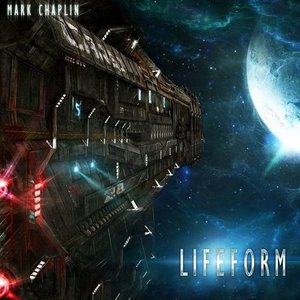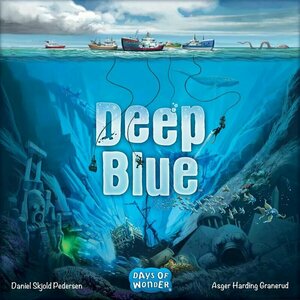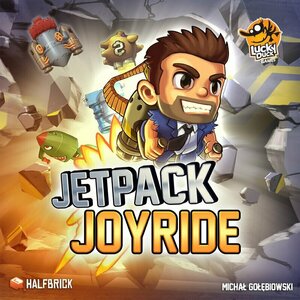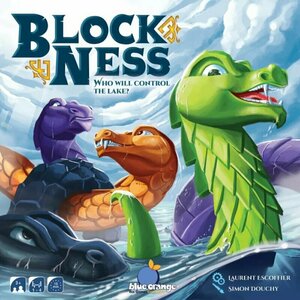
Dream League Soccer - Classic
Games and Sports
App
Soccer as we know it has changed! Dream League Soccer is YOUR chance to build THE best team on the...
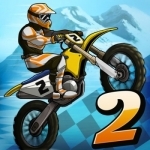
Mad Skills Motocross 2
Games and Sports
App
OVER 8 MILLION DOWNLOADS! A #1 GAME IN 48 COUNTRIES! Discover what professional racers, motocross...
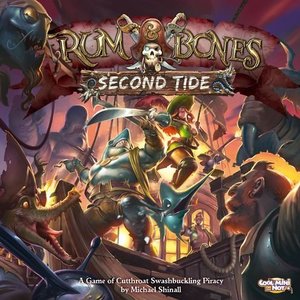
Rum and Bones: Second Tide
Tabletop Game
Avast ye pirates! Gather your crews and set sail for adventure on the high seas in Rum & Bones:...
2017Games Boardgames PirateGames
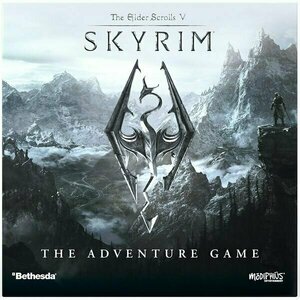
The Elder Scrolls V: Skyrim - The Boardgame
Tabletop Game
ADVENTURES IN THE WORLD OF SKYRIM! Before the Dragonborn came to Skyrim…. You are surviving...

Hands up alias charades and heads up activity game for fun friends company
Games and Entertainment
App
Hands up – Charades, Activity and Alias in one app! Exciting game for friends will make your party...

Hands up alias charades and heads up activity game for fun friends company Free
Games and Entertainment
App
Hands up – Charades, Activity and Alias in one app! Exciting game for friends will make your party...
Purple Phoenix Games (2266 KP) rated Deep Blue in Tabletop Games
Mar 17, 2022
Deep Blue is a nautical game for 2-5 players of deck building, hand management, and a bit of push your luck. In it, players take on the roles ship Captains who are racing to collect treasures from undersea wrecks. Players will be hiring Crew members, sailing across the sea, and sending divers down to wrecks to salvage any valuables. The race is on, though, because you are not the only Captain on this treasure hunt… Throughout the game, players will stumble across 4 Wrecks that make up a Sunken City. Once all 4 areas of the Sunken City have been discovered and searched, the game ends. The player who earns the most VP from their collected treasures by the end of the game is declared the winner!
To setup for a game, follow the instructions in the rulebook – there are simply too many to detail here. The basic gist of setup is to create a market of Crew cards, shuffle and randomly distribute Wreck tiles across the board, and create a Gem pool. Each player will receive a player mat and starting cards in their chosen color, as well as 2 ships to be placed on the starting space of the board. Players will also get a treasure chest, in which they will keep their VP throughout the game. Set the Dive Site board, Gem bag, and VP tokens off to the side. Select a starting player, deal out starting tokens accordingly, and the game is ready to begin! Pictured below is the setup for a 3-player game.
On your turn, you will take one of four possible actions: Recruit a Crew Member, Sail, Rest, or Dive. Throughout the game you will be building your personal deck by Recruiting Crew Members. These new Crew offer unique abilities and scoring powers to be used during Dives. In order to recruit a Crew Member, you must pay the corresponding cost listed by its location in the market. To do so, you will play cards from your hand with $ symbols that equal the required cost. Once you play a card from your hand, it goes facedown onto the Rest area of your player mat. Take the Crew Member you just hired directly into your hand, and move the Market cards down to fill in the empty space, drawing a new card for the final slot. If you choose to Sail, you will play a number of cards from your hand with the Propeller icon. The number of icons dictates how many spaces you may sail. You can use all of your movement on one of your ships, or you can break movement across both ships. If you end a move on a face-up Wreck tile, you will ‘anchor’ your boat to one of the open scouting spots. These scouting spots offer special scoring benefits during the Dive on this tile. If you end movement on a face-down Wreck tile, first you will flip it face-up, and then anchor your boat. When landing on a buoy or an empty dive site, nothing happens.
On any turn, you may instead choose to Rest. To perform this action, you will shuffle all cards that reside on the Rest area of your player mat, and then draw only the 3 topmost cards into your hand. This is the action that allows you to refresh your hand, as you play more cards and your hand starts to dwindle. The final action choice is to Dive. This action is the crux of the game. When you have a boat on a Wreck tile, you may choose to start a Dive. The first step is to declare your Dive – decide which Wreck to Dive if your boats are on different Wreck tiles. Before the Dive begins, any opponents who have boats on adjacent Wreck tiles may move their boats to your Wreck in hopes of also profiting from the Dive. When all eligible boats have been moved to the Wreck, you will then officially begin the Dive. Take the Gem bag and Dive Site board. You will then draw Gems out of the bag, one-by-one, resolving them as necessary. Red, Gold, Silver, Green, and Purple gems are treasures, and can earn you VP. Blue and Black gems are Hazards that must be defended against in order to continue the Dive.
After a Gem is drawn and placed on the Dive Site board, players may choose to play a Crew Member to increase their VP earned. For example, one card allows you to earn 8 VP for a Green gem, instead of 0. To defend against hazards, players may play Crew from their hands who have the ability to negate the hazard, or may use the special ability of their scouting spot on the Wreck tile. If you are unable to defend against a hazard, you are forced to resurface and leave the Dive. The Dive continues in this fashion, until either the active player decides to end the Dive, or when they no longer have the ability to defend against hazards. Any players who still have boats at the Dive Site will collect VP from Crew cards they played, as well as a base amount of VP for the different Gems that were drawn. Once a Dive has been performed at a Wreck, that tile is removed from the game, leaving an empty dive site behind. If players have performed a Dive at one of the 4 Sunken City tiles, it is removed from the board, but placed on its corresponding space in the corner of the board. After all 4 Sunken City tiles have been moved to the corner of the board, the game immediately ends. Players will count up all the VP collected throughout the game, and the player with the highest score is declared the winner!
So how do I feel about Deep Blue overall? I would have to say that it’s fine. Just fine. There are some elements that I really enjoy, but others that kind of frustrate me. What I enjoy – the bits of strategy involved, and the awesome components. What I don’t enjoy – the pacing of the game and the imbalance of actions. To touch on the pros first, this game does require some strategy. You have to decide where to Sail, which Crew to recruit, which Crew to play and when to play them, etc. VP are earned by participating in Dives, so you want to make sure you can be at as many Dives as possible. That means keeping ships close to opponents to profit from any dives they may choose to initiate. Another interesting strategic element is the Rest action. You shuffle your discard pile, but then only draw the 3 topmost cards into your hand. You might not always draw what you were wanting, but you are always allowed to take a Rest action, regardless of how many cards are in your discard. There is no hand limit in this game, so do you rest every other turn to ensure you have almost all cards in your hand? Or do you dwindle your hand down in order to perform other actions instead? It’s all about your strategy, and you never quite know what your opponents are trying to do.
Now for the cons. The pacing of the gameplay feels really slow to me. You are only allowed to perform 1 action per turn, so it seems like the game takes a while to really get going. At first, everyone is going to be wanting to Sail, as all players start in the same starting area of the board. You want to get your ships out there ASAP. But then you run out of cards, so you have to take a turn to Rest and get those cards back. You’re taking a bunch of little turns to accomplish any one bigger thing, and that bogs down the gameplay for me. If you were able to perform 2 actions per turn, that would probably alleviate some of this frustration, as it would allow you to progress more quickly than by taking only a single action. Another aspect I mentioned is the imbalance of actions. The Recruit, Sail, and Rest actions all feel to me like they are on the same level, but the Dive action is different. Which in and of itself isn’t necessarily a bad thing. But the process of the Dive action is vastly different than any of the other actions, to the point that it kind of feels like a different game to me. For half of the game, you’re playing this game of strategy, deck building, and optimizing placement across the board. But for the other half, it turns into a push-your-luck frenzy that seems disjointed from the rest of the game to me. No matter how strategic and careful you are with your actions, it ultimately comes down to the luck of the draw.
To touch on components for a minute – the production quality of this game is awesome. The board, Dive Site board, and VP tokens are nice chunky cardboard. The cards are colorful, have cool artwork, and are sturdy. And the treasure chests are awesome little plastic chests that definitely are holding up well. The Wreck tiles are big and thick, the Gems are cute, and the ships are fun to play with. So overall, this game is made very well.
You can probably tell by now that I have mixed feelings about Deep Blue. There are aspects that I like, but other aspects that negate some of those positive attributes. I was psyched for a cool nautical deck builder where I could really flex my strategy, but got more push-your-luck than I was anticipating. Deep Blue will probably stick around in my collection for the time being. But, like Josh, I will probably find something that gives me the same vibes but done better. It’s a game that I’ll pull out from time to time, but definitely not one that’s going to break into my Top 10. With that said, Purple Phoenix Games gives it a sunken 4 / 6.
Purple Phoenix Games (2266 KP) rated Jetpack Joyride in Tabletop Games
Jan 8, 2020 (Updated Jan 8, 2020)
Originally a mobile game, Jetpack Joyride follows our main character, Barry, as he attempts to escape a top-secret lab with a stolen jetpack! He must avoid being hit by zappers, annihilated by lasers, and blown away by missiles in the process. If Barry succeeds, he escapes with not only the high-tech jetpack, but also with as many gold coins and other top-secret gadgets as he can get his hands on! So the risk is definitely worth the reward. But if Barry is unable to escape, he will face the consequences for his unauthorized joyride… In all honesty, I had never heard of Jetpack Joyride before I Kickstarted the board game version, so I downloaded it on my phone to see how it plays. Do you remember Flappy Bird? The mobile version of Jetpack Joyride is kiiiinda like that, but more exciting and way less infuriating. It’s free to download in the App Store and Google Play Store, so check it out if you’re interested! Anyway, back to the board game version. The premise is the same as the app – you have to create a path for Barry to use for his escape from the lab, utilizing the gadgets available to you and collecting gold coins on your way.
DISCLAIMER: We are using the Kickstarter Deluxe version of the game. We do have the expansions from the KS campaign, but will not be using those for this review. Also, we do not intend to cover every single rule included in the rule book, but will describe the overall game flow and major rule set so that our readers may get a sense of how the game plays. For more in depth rules, you may purchase a copy from the publisher directly or from your FLGS. -T
Jetpack Joyride is a real-time game of tile placement in which players are racing to see who can complete their run (path through the lab) the fastest. The game lasts for 3 runs, and points are earned throughout all runs. To setup, each player receives a set of 4 lab sector cards and sets them on the table in front of them in numerical order, 1-4. Three mission cards (cards that score points at the end of the run) are revealed and available for all players. Players may also have gadgets, available only to them, to help score extra points. When a run begins, all players grab translucent polyominoes (like matte versions of bits from Blokus) from the common pool and place them on their lab cards to create an unbroken path through the lab. There are specific placement restrictions that I will leave for you to discover in the rulebook. The game has no set time limit for each run, but it is a race to complete a path before your opponents. At the end of the run, points are tallied for completed missions and gadget cards. Easy, right? Here’s a small twist – before starting the next run, all players pick up their lab cards and pass them to the player on their left. So each run, players are looking at new cards and must find new paths through the lab! New mission cards and gadgets are revealed before subsequent runs as well. The player with the most points at the end of all 3 runs is the winner!
Jetpack Joyride is a fast-paced, exciting, and surprisingly strategic game that keeps all players engaged and entertained. And that’s what I love about it. First of all, real-time games are always high-energy, at least in my opinion. It’s nearly impossible to stay calm and collected when you’re literally racing against your opponents! Jetpack Joyride is definitely not a passive game, and there’s so much action and excitement that you sometimes forget you’re literally just laying tiles on cards. The next thing I love about this game is how deceptively strategic it is. Laying tiles to form a legal path across cards is not complicated, but doing so while also trying to earn extra points by completing missions (like placing 3 tiles of the same shape in a row, for example) adds a strategic element that you don’t expect. You’re not only trying to finish your run the fastest, but you’ve also got to fulfill the requirements for multiple mission and gadget cards too. One misplaced tile could decimate a run for you, so you’ve always got to be thinking several tiles in advance.
Going along with that, another neat thing about Jetpack Joyride is that all players are drawing tiles from a common pool. There is a finite number of tiles, and a specific number of the different shapes, so if the shape of tile you need is gone from the pool, you’re outta luck! You have to think and move quickly, otherwise you might get knocked out of a run, and that costs you valuable end-game points. For such a simple game, Jetpack Joyride also has a lot of variability. All lab cards are double-sided, and can be mixed and matched in any combination, as long as they are in a numerical set of 1-4. There are so many possibilities, chances are you won’t ever play with the same card combo twice….and if you do, chances are you won’t remember it 😛 All of these aspects elevate this game from a simple party game to a strategically fun game that can be played with any player count.
Overall, I think Jetpack Joyride is great. After my first play, I rated it a 4+, but after a few more I’ve changed my rating to a 5. As you can see from our scores above, Travis and our guest judge Luke enjoyed it as well. It’s a nice, light game that can be used as a filler between heavier games, or as a main-event game all on its own. Definitely a game I will use with newer gamers, and the strategic side will keep me coming back for more. I think Jetpack Joyride will get a lot of playtime from me, and it was worth my investment on Kickstarter. Purple Phoenix Games gives it a jet-powered 15 / 18.
Purple Phoenix Games (2266 KP) rated Block Ness in Tabletop Games
May 10, 2021
Block Ness is a connections game with big chunky bits where players are taking on the mantles of ever-expanding water serpents attempting to stretch themselves out as long as possible. The winning serpent is they who either is able to stretch out furthest (by using all of their body pieces), or who is able to reach for the sun the furthest (by having the tallest head piece at game end).
DISCLAIMER: We were provided a copy of this game for the purposes of this review. This is a retail copy of the game, so what you see in these photos is exactly what would be received in your box. I do not intend to cover every single rule included in the rulebook, but will describe the overall game flow and major rule set so that our readers may get a sense of how the game plays. For more in depth rules, you may purchase a copy online or from your FLGS. -T
To setup, place the peg board on top of the insert in the box. This signifies the lake and where the game will take place. Each player chooses a color of serpent and takes all the corresponding pieces in front of them. Each serpent has a starting body piece that is shorter than all the other pieces, and must be placed first. The youngest player places their first piece on the board, within the darkest inner colors of the lake (UNlike the setup pictured below. Sometimes you just HAVE to let little ones place wherever they like to avoid ACTUAL monster spawns). The other players follow in turn order and attach the head and tail pieces to either end of the starting segments. The game is now setup and ready to begin!
On a turn, the active player will choose a body piece to add to their serpent at either the head or tail location. Players are limited to the three spaces adjacently surrounding the head and tail segments (akin to the compass markings of North, East, South, West). The new body segment then receives either the head or tail piece on its end to signify the new growth of the serpent. No body segments may be placed in a diagonal fashion, and there will come a time when serpents will need to get creative in order to place.
Should a serpent wish to expand through an existing player’s body segment, they may only do so if they are able to place said piece ABOVE the existing segment. For example, the photo below shows the orange serpent slithering above a portion of the black serpent (whose placement now looks somewhat illegal anyway). No matter where the segment is placed the head or tail piece will need to be moved to the newly-placed segment to allow for further expansion on future turns.
Play continues in this fashion until one player has the least leftover body segments without a legal placement, or controls the serpent with the tallest head among the tied players. The winner then must gloat and challenge the others to another game.
Components. This game has great 3D serpent pieces and a nice little peg board to play on. I truly love when games include the box as part of gameplay, and this uses it well. The art and colors used throughout are simply perfect (thank you for not using boring blue, red, yellow, green). The only tiny gripe I have is more of a hope than anything. I hope that upon many many plays the peg board stays nice and doesn’t deteriorate. I realize it’s a game and it’s made out of cardboard. I know many people love seeing their games age because it shows a well-loved item, but I’m not like that. I like my games to always look new. Perhaps if the peg board ever does warp or get damaged in any way I may look into having a plexi replacement made. But that aside, this is a beautiful game with excellent components, and exactly what I would expect from Blue Orange Games.
So do I like this one? Oh yes, quite a bit! Though it is not exactly the same, I believe this may kill off an old family favorite of mine – Blokus. Again, this is not a re-theme of Blokus at all, but it certainly gives me the same vibes, but in three dimensions and with much greater flair. In both games players are actively trying to block each others’ expansion progress, but Block Ness offers a smaller board and way less pieces with which to play. This creates a more tense game in a shorter time frame, and you play with serpent monsters!!
The serpents are all so much fun to handle, and while I initially though moving the head and tail pieces would get annoying after a while, I quite enjoy seeing my new serpent monster after their endpoints are reattached. Like I mentioned earlier, I very much appreciate being able to play orange, purple, black, and a yellowy-green very similar in color to our highlight color we use for our brand. Super happy about those color choices.
All in all, to say this slays Blokus is a huge thing for me. My wife and I absolutely adore Blokus, but I think I would much rather play Block Ness. I also can play this with my kids much easier and not have to worry about one of them losing the 1×1 pieces. I am certainly not alone in recommending this one. Purple Phoenix Games gives this a legendary 10 / 12. I would be surprised if this doesn’t intrigue most gamers of almost any skill and preference. There is much strategy to be employed, and an equal amount of frustration as the serpents block in other opponents. While I have no desire to try to see the actual Loch Ness monster, I will ALWAYS be up for a game of Block Ness.
